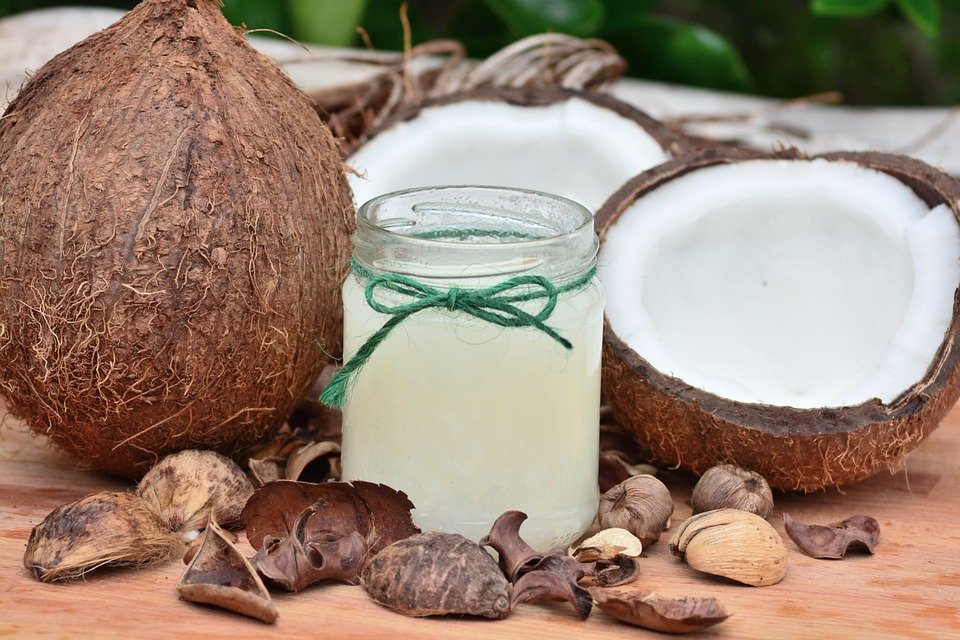
A Missing Piece?
Even if you only eat fresh, unprocessed foods and organic proteins, you may not be getting all the nutrients you need. This is because the quality of the soil where the food was grown may be poor, and therefore the food is not as nutritious as it could be. Our food just isn’t what it used to be.
Why Food is Depleted of Minerals
In the past 100 years, large-scale commercial agriculture that uses a lot of chemical pesticides and artificial fertilizers has drastically lowered the amount of minerals in the soil. We used to get our food from hunters and gathering it from healthy soils, but farmers don’t put the same healthy compost back into the soil.
In the past, farmers had to carefully improve the nutrient levels of their fields and pastures by using compost, crop rotation, and taking intervals where the soil could rest to maintain its fertility.
The use of chemical-based fertilizers allows crops to grow without replenishing the soil, but this depletes the soil of naturally occurring minerals and pH-balancing microorganisms.
Mineral Depletion is Getting Worse Every Year
Soil mineral depletion has been a growing problem over the past several decades:
The United Nations’ 1992 Rio Earth Summit concluded with deep concern over the world’s declining mineral values in farm and range soils.
This conclusion is based on information that suggests that, over the past 100 years, the mineral levels in agricultural soils have drastically dropped by an average of 72% in Europe, 76% in Asia, and 85% in North America.
The outlook is bleak:
The mineral depletion of the soil in the United States is so bad that, in 1997, an individual would have to eat 26 apples to get the same amount of iron from an apple as someone would have in 1950.
You will have to eat more apples today as the new GMO seeds and more intense chemical pesticides have been introduced.
It’s a global phenomenon too, and isn’t much better in Europe:
They looked at 3,300 foods, including fruits, vegetables, and processed foods. They found that the nutrient content of food has declined over the past 50 years.” The researchers found that the nutrient content in 3,300 different foods has decreased throughout the past 50 years. 4, No. 1 The study found that over the 50-year period from 1940 to 1991, fruits and vegetables lost between 20-60% of their mineral content. 19, No. 3, Autumn 2006.
What do Minerals Have to do With Health?
The short answer? EVERYTHING.
Every living organism needs minerals to function properly, including bacteria, plants, animals, and humans. In order to stay healthy, humans need to consume a variety of minerals, and they need to consume these minerals in specific quantities. Soil minerals are present in smaller amounts than what is needed for health, but this is not yet a problem.
Trace Minerals
If you’re not getting enough trace minerals, it can cause problems for your health. Minerals work together with other minerals, vitamins, enzymes, and amino acids in many chemical reactions.
A decrease in minerals in the soil can lead to an increase in disease.
Given that the soil has been so rapidly depleted over the past century, and even more so in the past 30 years, it’s not surprising that diseases have also accelerated rapidly over that same period of time.
What Happens When Your Mineral Levels Are Low?
If you lack certain minerals, your body will exhibit signs of this.
For example, people who don’t have enough magnesium in their bodies may experience constipation, anxiety, depression, and sleep problems. Zinc affects the immune system, so a lack of zinc can make you more susceptible to getting sick or developing skin issues. Selenium is important for normal heart function and fertility, especially in men. Severe selenium deficiency has been linked to Sudden Death Syndrome, which is a name for the unexplained cardiac-related deaths of people under age 35 with no apparent heart disease.
Minerals that are only needed in small amounts, such as copper, are important because a lack of copper can cause irregular heartbeat or more serious heart problems.
The body can’t function properly when it doesn’t have enough minerals.
Dr. Linus Pauling, who won the Nobel prize twice, concluded that every sickness, disease, and ailment can be traced to a mineral deficiency.
How to Get Enough Minerals in Your Diet
I have been looking into ways to protect my family from the harmful health effects of mineral depletion. This is a very serious issue with potentially widespread consequences for the human body.
We consume a lot of protein that is dense in nutrients and produce our food from fresh, local sources. We also try to grow our own food whenever possible.
If everything were ideal, we would be able to get all of the minerals we need from food. Since it may no longer be possible to get all the nutrients we need from food, supplements can help.
Mineral supplements are not a new concept, they have been around for a long time. However, not all mineral supplements are the same. Even though you may think that a regular over-the-counter mineral or multivitamin and mineral supplement is good for your body and gives you the minerals you need, it actually only has a small number of minerals and trace elements.
I discovered that there is a lot of difference between minerals that come from nature and minerals that are man-made.
The Difference Between Organic and Inorganic Minerals
Minerals that occur naturally in an ionic state are called organic minerals. The mineral removes toxins from the body and prevents them from building up and becoming harmful.
Organic minerals are found naturally in plants, and it is thought that plants extract around 70-80 minerals from the soil. These minerals are then passed on to the plants we eat, or the plants that animals eat, and eventually make their way to us.
Ionic minerals are not stored in the body for long periods of time, similar to water-soluble vitamins. They cannot build up to toxic levels in the body’s soft tissues.
Inorganic minerals that are found in multi-vitamin or mineral supplements often come from pulverized stone or mineral deposits. Minerals are not as bioavailable as living substances because they are not living.
What Is Fulvic Acid?
Fulvic acid is one component of hummus. Humus is a dark, organic matter that is found in soil, Sediments, and bodies of water. It is made of many different compounds that are found on Earth.
Fulvic acid is created when plants and animals decompose and microorganisms break them down.
We have discovered that fulvic acids, which are found in soil, can have a positive effect on gut health and immunity. People use fulvic acid and soil-based probiotics as supplements to make up for what is lacking in their diets from modern farming techniques.
A lot of people used to get higher amounts of humic acids from the soil, but today they often take food-grade supplements to get more nutrients and improve gut health.
Color, Structure, and Properties:
Fulvic acid and other humic acids are brownish-yellow substances that can be found in nature. There are many nutrients and active compounds in them that can help improve health.
These include:
- trace minerals
- electrolytes
- fatty acids
- silica (which boosts collagen synthesis)
- prebiotics
- probiotics
Fulvic minerals contain multiple active functional groups, including phenolic hydroxyl, ketone carbonyl, quinone carbonyl, carboxyl, and alkoxyl groups.
The structure of glutathione is made up of aromatic, organic polymers with many carboxyl groups that release hydrogen ions, resulting in an electric charge that helps attract free radicals, heavy metals, and other toxins within the body. This allows it to act like a detoxification agent.
Fulvic acid helps metals become more soluble in water when it reacts with them, which allows the metals to be carried out of the body more easily.
Fulvic acid is not very appealing because it is yellow and has a bad taste. Some people mix powdered fulvic acid into their juice or smoothie to make the taste more palatable.
Fulvic acid can improve the effectiveness of supplements and increase their bioavailability when taken alongside them.
What is the pH of fulvic acid?
It has a high pH and is small and fine. This helps make it more bioavailable in the body.
The pH of this substance is equal to 1.5, meaning it is a soluble, strong acid.
How is fulvic acid produced?
This substance is produced by microbes during metabolic processes. That means it’s produced when organic plant matter decomposes.
This process releases millions of beneficial bacteria.
- Within the environment, fulvic acid is found in not only soil and rock but also streams, lakes, and ocean water.
- Humic acids form complexes with ions that are commonly found in the environment, creating a tight humic colloid bind that helps with water filtering, agriculture processes, and detoxification.
- The presence of carboxylate and phenolates within humic acids gives them the ability to act like natural chelators, which means they form chemical complexes that are important for regulating the bioavailability of metal ions like iron, calcium, magnesium, and copper within the human body and environment.
- Most humic acid also contains some fulvic acid, but the two are somewhat different because they have different molecular weights (sizes).
- Fulvic acid is much smaller than humic acid and is sometimes referred to as a low molecular weight humic substance. Because they are smaller, fulvic acids can easily be absorbed by plant roots, stems, and leaves.
Benefits and Uses
1. Improves Gut Health and Immune Function
The nutrients in fulvic acid help improve the function of the digestive system and also promote the growth of healthy bacteria populations. A strong digestive system does a lot for our bodies including boosting immunity, helping with hormone production, regulating appetite, reducing stress response, and more.
If particles are able to escape through the gut lining and enter the bloodstream, it can trigger inflammation and autoimmune reactions.
There is some evidence that consuming fulvic acid can help decrease digestive disorders and other issues, including:
- SIBO symptoms (small intestine bacterial overgrowth)
- inflammatory bowel disorders
- bacterial infections (respiratory, urinary tract, etc.)
- the flu and common colds
2. Helps Boost Digestion and Nutrient Absorption
It’s important to get enough electrolytes and other minerals for proper metabolism, digestion, and nutrient absorption.
You can obtain organisms from the fulvic acid and take them in small doses to see a fast, significant difference in the ratio of bacteria living in your gut. This can help reduce digestive issues such as constipation, bloating, diarrhea, and food sensitivities.
Fulvic acid not only provides cells with raw nutrients but also increases the absorption rate of nutrients by making cells more permeable. Additionally, it has been shown to fight inflammation within the digestive tract.
3. Protects Cognitive Health
A study published in 2011 in the Journal of Alzheimer’s Disease found that fulvic acid shows promise in protecting against cognitive impairments, including Alzheimer’s disease. This is due to its multiple antioxidants and nutraceutical properties.
Fulvic acid has been shown to help lower the length of tau fibrils and improve their morphology, which disassembles their performance and stops disease progression.
Fulvic acid is thought to have neuroprotective effects and could provide new insights into potential natural treatments for Alzheimer’s disease, according to recent research.
4. Improves Detoxification
Humic acids improve digestion and energy levels by detoxifying the body. Humic acids can bind to and break down toxins and metals that enter the body, which can help to protect against exposure to harmful substances.
Humic acids have the ability to selectively attract and filter heavy metals, making them useful for cleaning soils and water. They help to attach or join copper and iron together.
Other chemicals require higher concentrations in order to be effective at geochemical processing, but research shows that this is not the case for the chemical being discussed.
5. Lowers Free Radical Damage and Inflammation
Fulvic acid contains antioxidants that help to protect the body from the harmful effects of free radicals. Fulvic acid can also help to detoxify the body by removing toxins such as chemicals from agriculture and radioactive waste.
It also helps to extend the life of cells and their permeability by providing electrolytes that have numerous functions within the heart, muscles, brain, and digestive tract.
6. Improves Energy Levels and Lowers Pain
Many people who take fulvic acid supplements report feeling more energetic. This is likely because fulvic acid aids in detoxification decrease inflammation and free radical damage, and increases the intake of electrolytes and other key nutrients.
The research conducted by Doctors Across Borders has shown that humic acids, which are natural and organic electrolytes, can activate and energize almost every biological process in the body. An electrolyte is a substance that helps to conduct electricity and helps cells to survive when they are under stress from things like infection, lack of sleep, or surgery.
This makes fulvic acid useful for reducing chronic nerve pain, headaches, joint pain caused by arthritis, or bone and muscle pains associated with aging.
Fulvic acid’s electrolytes may help reduce swelling, decrease inflammation, soothe and relax muscles, and improve circulation. An electrolyte imbalance can make symptoms worse.














